Entry Database : PDB / ID : 5k2cTitle 1.9 angstrom A2a adenosine receptor structure with sulfur SAD phasing and phase extension using XFEL data Adenosine receptor A2a/Soluble cytochrome b562 chimera Keywords / / / / / / Function / homology Function Domain/homology Component
/ / / / / / / / / / / / / / / / / / / / / / / / / / / / / / / / / / / / / / / / / / / / / / / / / / / / / / / / / / / / / / / / / / / / / / / / / / / / / / / / / / / / / / / / / / / / / / / / / / / / / / Biological species Homo sapiens (human)Escherichia coli (E. coli)Method / / / Resolution : 1.9 Å Authors Batyuk, A. / Galli, L. / Ishchenko, A. / Han, G.W. / Gati, C. / Popov, P. / Lee, M.-Y. / Stauch, B. / White, T.A. / Barty, A. ...Batyuk, A. / Galli, L. / Ishchenko, A. / Han, G.W. / Gati, C. / Popov, P. / Lee, M.-Y. / Stauch, B. / White, T.A. / Barty, A. / Aquila, A. / Hunter, M.S. / Liang, M. / Boutet, S. / Pu, M. / Liu, Z.-J. / Nelson, G. / James, D. / Li, C. / Zhao, Y. / Spence, J.C.H. / Liu, W. / Fromme, P. / Katritch, V. / Weierstall, U. / Stevens, R.C. / Cherezov, V. / GPCR Network (GPCR) Journal : Sci Adv / Year : 2016Title : Native phasing of x-ray free-electron laser data for a G protein-coupled receptor.Authors: Batyuk, A. / Galli, L. / Ishchenko, A. / Han, G.W. / Gati, C. / Popov, P.A. / Lee, M.Y. / Stauch, B. / White, T.A. / Barty, A. / Aquila, A. / Hunter, M.S. / Liang, M. / Boutet, S. / Pu, M. / ... Authors : Batyuk, A. / Galli, L. / Ishchenko, A. / Han, G.W. / Gati, C. / Popov, P.A. / Lee, M.Y. / Stauch, B. / White, T.A. / Barty, A. / Aquila, A. / Hunter, M.S. / Liang, M. / Boutet, S. / Pu, M. / Liu, Z.J. / Nelson, G. / James, D. / Li, C. / Zhao, Y. / Spence, J.C. / Liu, W. / Fromme, P. / Katritch, V. / Weierstall, U. / Stevens, R.C. / Cherezov, V. History Deposition May 18, 2016 Deposition site / Processing site Revision 1.0 Sep 21, 2016 Provider / Type Revision 1.1 Oct 12, 2016 Group Revision 1.2 Nov 23, 2016 Group Revision 1.3 Nov 22, 2017 Group / Category Revision 1.4 Feb 14, 2018 Group / Category Item / _diffrn_source.pdbx_synchrotron_siteRevision 1.5 Nov 28, 2018 Group Category diffrn / pdbx_serial_crystallography_data_reduction ... diffrn / pdbx_serial_crystallography_data_reduction / pdbx_serial_crystallography_measurement / pdbx_serial_crystallography_sample_delivery / pdbx_serial_crystallography_sample_delivery_injection Item Revision 1.6 Nov 6, 2024 Group Data collection / Database references ... Data collection / Database references / Derived calculations / Structure summary Category chem_comp_atom / chem_comp_bond ... chem_comp_atom / chem_comp_bond / database_2 / pdbx_entry_details / pdbx_modification_feature / pdbx_struct_conn_angle / struct_conn Item _database_2.pdbx_DOI / _database_2.pdbx_database_accession ... _database_2.pdbx_DOI / _database_2.pdbx_database_accession / _pdbx_struct_conn_angle.ptnr1_auth_seq_id / _pdbx_struct_conn_angle.ptnr3_auth_seq_id / _pdbx_struct_conn_angle.value / _struct_conn.pdbx_dist_value / _struct_conn.ptnr2_auth_seq_id
Show all Show less
 Yorodumi
Yorodumi Open data
Open data Basic information
Basic information Components
Components Keywords
Keywords Function and homology information
Function and homology information Homo sapiens (human)
Homo sapiens (human)
 X-RAY DIFFRACTION /
X-RAY DIFFRACTION /  FREE ELECTRON LASER /
FREE ELECTRON LASER /  SAD / Resolution: 1.9 Å
SAD / Resolution: 1.9 Å  Authors
Authors Citation
Citation Journal: Sci Adv / Year: 2016
Journal: Sci Adv / Year: 2016 Structure visualization
Structure visualization Molmil
Molmil Jmol/JSmol
Jmol/JSmol Downloads & links
Downloads & links Download
Download 5k2c.cif.gz
5k2c.cif.gz PDBx/mmCIF format
PDBx/mmCIF format pdb5k2c.ent.gz
pdb5k2c.ent.gz PDB format
PDB format 5k2c.json.gz
5k2c.json.gz PDBx/mmJSON format
PDBx/mmJSON format Other downloads
Other downloads 5k2c_validation.pdf.gz
5k2c_validation.pdf.gz wwPDB validaton report
wwPDB validaton report 5k2c_full_validation.pdf.gz
5k2c_full_validation.pdf.gz 5k2c_validation.xml.gz
5k2c_validation.xml.gz 5k2c_validation.cif.gz
5k2c_validation.cif.gz https://data.pdbj.org/pub/pdb/validation_reports/k2/5k2c
https://data.pdbj.org/pub/pdb/validation_reports/k2/5k2c ftp://data.pdbj.org/pub/pdb/validation_reports/k2/5k2c
ftp://data.pdbj.org/pub/pdb/validation_reports/k2/5k2c Links
Links Assembly
Assembly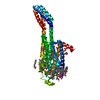
 Components
Components
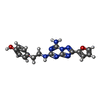


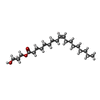
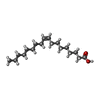
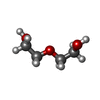







 X-RAY DIFFRACTION / Number of used crystals: 1
X-RAY DIFFRACTION / Number of used crystals: 1  Sample preparation
Sample preparation FREE ELECTRON LASER / Site:
FREE ELECTRON LASER / Site:  SLAC LCLS
SLAC LCLS  / Beamline: CXI / Wavelength: 1.27 Å
/ Beamline: CXI / Wavelength: 1.27 Å Processing
Processing SAD / Resolution: 1.9→23.437 Å / SU ML: 0.31 / Cross valid method: THROUGHOUT / σ(F): 1.33 / Phase error: 22.75 / Stereochemistry target values: MLHL
SAD / Resolution: 1.9→23.437 Å / SU ML: 0.31 / Cross valid method: THROUGHOUT / σ(F): 1.33 / Phase error: 22.75 / Stereochemistry target values: MLHL Movie
Movie Controller
Controller






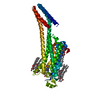
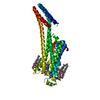


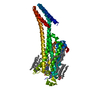
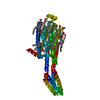
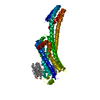
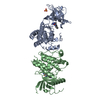
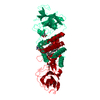
 PDBj
PDBj






















